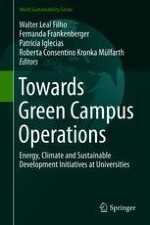2018 | OriginalPaper | Chapter
Evaluation of Environmental Impacts from a Molecular Evolution Laboratory’s Waste Management System—A Brazilian Case Study
Authors : Beatriz Vieira Freire, Ana Paula Bortoleto
Published in: Towards Green Campus Operations
Publisher: Springer International Publishing
Activate our intelligent search to find suitable subject content or patents.
Select sections of text to find matching patents with Artificial Intelligence. powered by
Select sections of text to find additional relevant content using AI-assisted search. powered by
